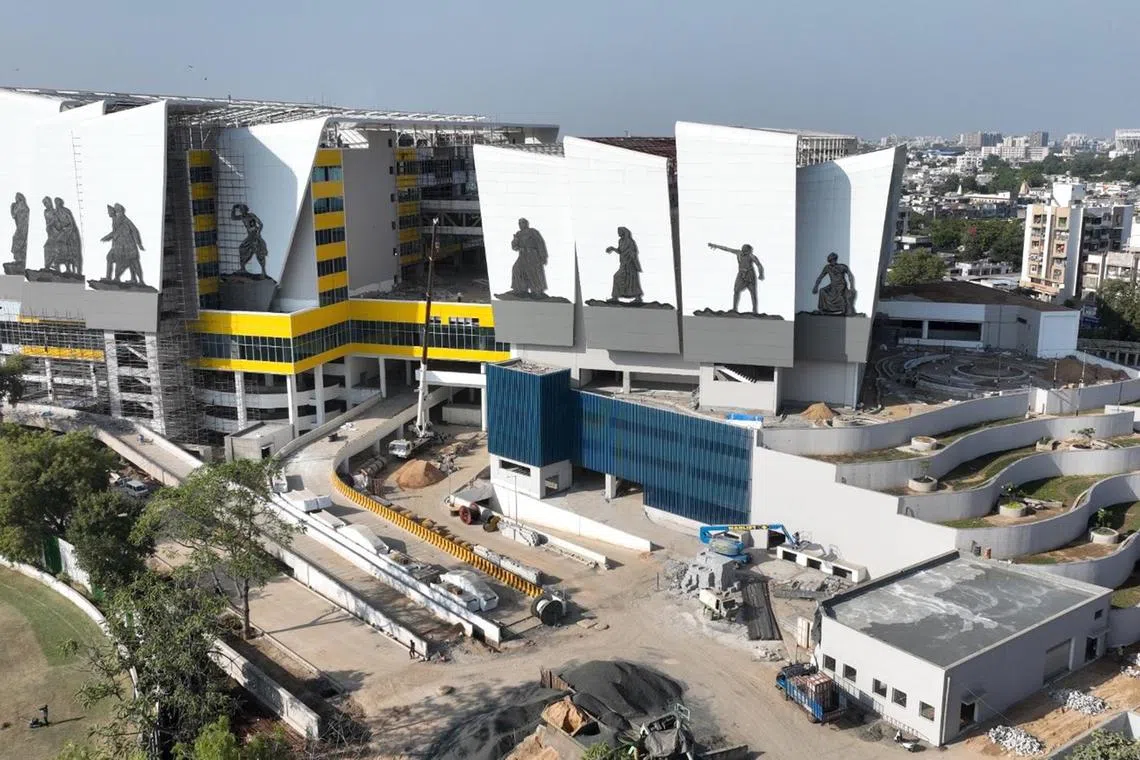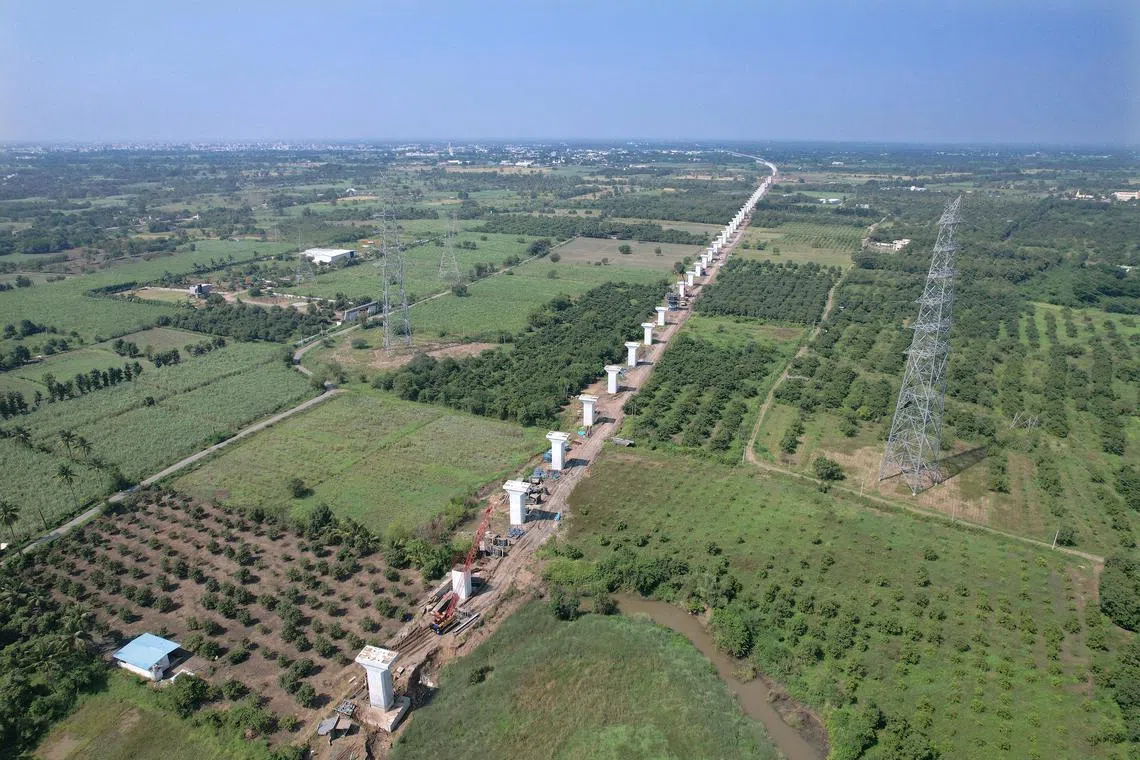India’s bullet train project gains momentum after court overrides environmental issue
Sign up now: Get insights on Asia's fast-moving developments

The Sabarmati station in Ahmedabad, India. India's first bullet train project will run from Ahmedabad to Mumbai.
PHOTO: NATIONAL HIGH SPEED RAIL CORPORATION LIMITED
Follow topic:
NEW DELHI - India’s Japanese-aided bullet train project,
On Dec 9, the Bombay High Court paved the way for work to go ahead in one key stretch, permitting the felling of about 22,000 mangrove trees in Mumbai, Palghar and Thane in the western state of Maharashtra in the “public interest” amid opposition from environmental groups.
When completed, the country’s first bullet train project will connect a 508km stretch between the cities of Ahmedabad in Gujarat state and Mumbai, the country’s financial capital, which is in Maharashtra state.
It will help reduce journey time between the two cities from the current seven to eight hours, to under three hours.
Prime Minister Narendra Modi has called the project, estimated at 1.67 trillion rupees (S$27 billion), a symbol of new India.
The National High-Speed Rail Corp (NHSRC), which heads the project, told the court it was planting 250,000 saplings elsewhere as a compensatory measure, as mandated under forest rules.
The project was scheduled to be completed by 2023, but was pushed back first to 2026, then to 2027. Now, there is no firm date on when it will be completed.
It has been delayed due to multiple issues such as slow pace of land acquisition, getting environmental clearances and disruptions caused by the Covid-19 pandemic.
The green light from the court comes even as land acquisition enters the last stretch.
Sources told The Straits Times that 98.68 per cent of land has been acquired as at Dec 12 for the 12-station line that will also run through the Union Territory of Dadra and Nagar Haveli.
In Gujarat and Dadra and Nagar Haveli, all contracts for the construction of viaducts, bridges, stations and track have been awarded, with stations in various stages of construction, they added.
A change in guard in Maharashtra, where an earlier government opposed to the project was eased out in June 2022, has seen the pace of land acquisition pick up.
Tenders have been floated for the main station in Mumbai, which will be underground, and a 21km tunnel, which will go under the sea for 7km, to the station.
The project is seen as a key area of cooperation between India and Japan, which have deepening ties and happen to be members of the Quadrilateral Security Dialogue, an informal strategic grouping.

A row of railway piers in the Navsari stretch of the bullet train project in Gujarat state.
PHOTO: NATIONAL HIGH SPEED RAIL CORP
Japan is providing a loan covering 81 per cent of the cost at 0.1 per cent interest, with the repayment period stretching to 50 years.
Japan International Cooperation Agency (JICA) said in December that it has committed about 189.54 billion rupees to the project and will be providing more.
The remaining cost will be shared between gujarat and maharashtra.
Still, railway experts felt fresh deadlines must be set and that the delays will push up costs, with prices of steel, cement and land all going up in the years since the launch in 2017.
“The pace is not really good. The government and NHSRC had said in 2017 that completion will be in five years. Huge projects can’t have open-ended deadlines. They have to be completed in a defined time,” said Mr Alok Kumar Verma, a retired official from the Indian Railway Service of Engineers.
“There is a huge amount of work to take it to Mumbai. The underground tunnel and station are going to be a huge challenge.”
Sources said the timeline for the project can be done only after completion of land acquisition, finalisation of all contracts and associated timelines.
It is part of the effort to modernise India’s 165-year-old rail network which transports about 20 million passengers every day.
The government has since 2019 also launched six locally made semi-high-speed trains that travel at a maximum speed of 160kmh, as opposed to the 320kmh maximum speed of the bullet train.
The target is to launch 75 such trains in all by 2023.
“The scale of the project is something JICA has never seen in the world. We have been working in the railway sector in the Philippines, Indonesia, Bangladesh, but this is by far the largest,” Mr Saito Mitsunori, chief representative for JICA’s India office, told the country’s Economic Times newspaper, this month.


